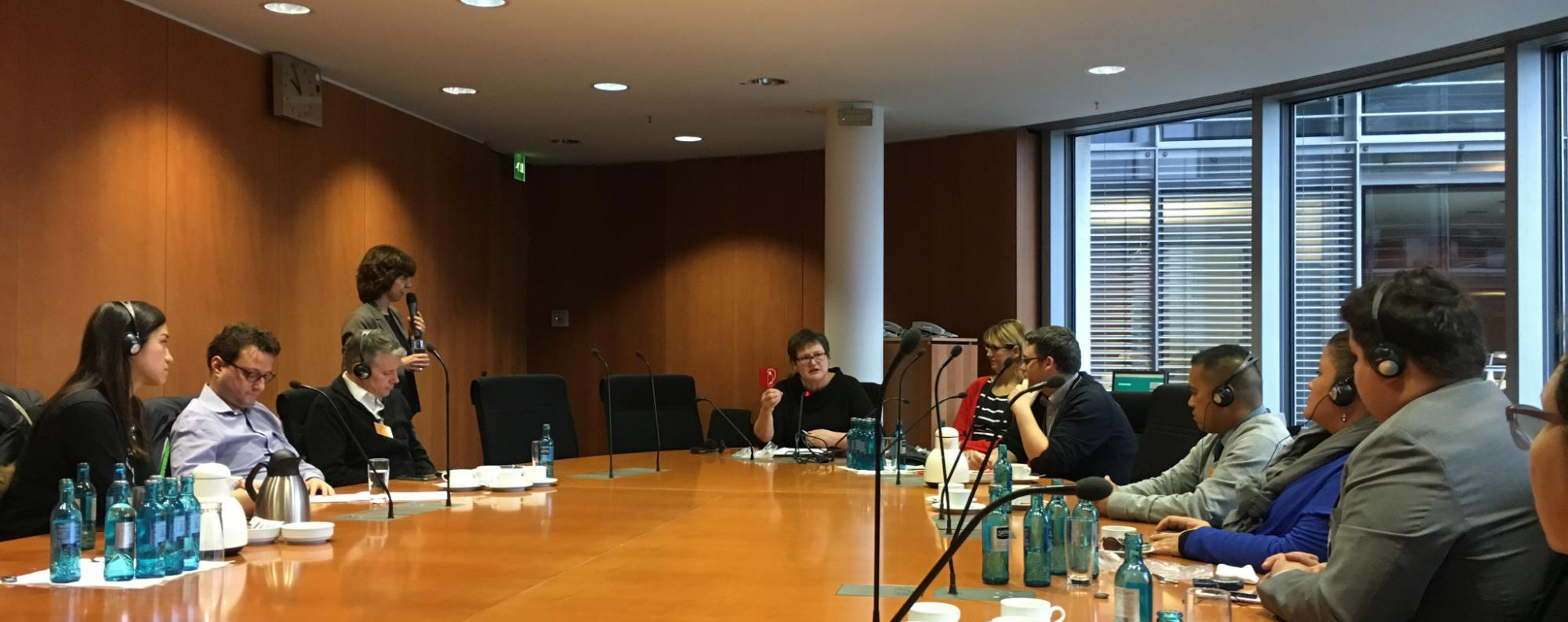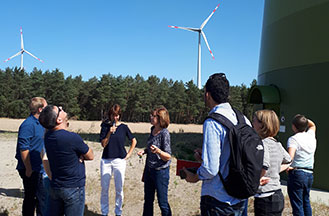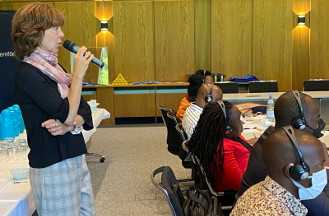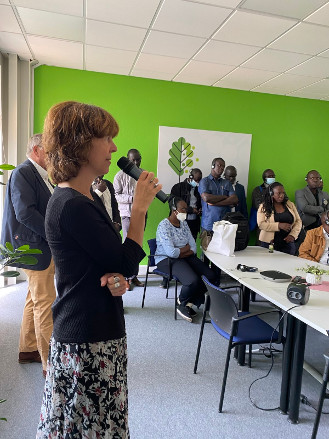
American trade union delegation Bundestag, Dec. 2017
Whispered interpreting (often also referred to as 'chuchotage') is a specific form of simultaneous interpreting. It is only used in certain situations and on rare occasions. During such an assignment, the interpreter sits behind or next to the person requiring the interpreting service and delivers the translation simultaneously by whispering into the person's ear.

Since the beginning of the Covid pandemic, chuchotage interpreters rarely sit next to the person they interpret for. The physical proximity between interpreter and listener(s) required for whispered interpreting is nowadays undesirable. This is why for more than three years our chuchotage interpreters have almost exclusively been using special portable interpretation equipment. Using this equipment, the chuchotage interpreter speaks into a microphone and the listeners hear the interpretation through headphones. An added benefit is that this technology allows more than two people to hear the interpretation and the interpreter does not need to sit in the immediate vicinity of the listeners.
Given the inherent mental and physical demands involved, two alternating interpreters are deployed for whispered interpreting. Often this activity requires greater concentration than when interpreting from a booth as the input does not come cleanly through headphones. It competes with distracting ambient noises that cannot be filtered out, such as clattering coffee cups, fire engines, coughs, doors closing. It is therefore recommended that whispered interpreting only be used for short events or in situations where sound-insulated booths are not practical, such as guided company tours, events involving multiple locations, delegation visits, short presentations or in restricted spaces.
Whispered interpreting is also frequently used in connection with consecutive interpreting. A typical scenario would be a panel discussion that is held exclusively in German but where one participant understands/speaks only English or French. In this case, the interpreter simultaneously interprets the German input provided by the other panelists into English or French. When the English- / French-speaking panelist speaks, the interpreter takes notes and interprets the input consecutively into German.


Foto: DGUV / Jan Roehl
For some clients, whispered interpreting is a good alternative to simultaneous interpreting in a booth: it requires less space, less up-front technical preparation, and lower technical costs. All you need is a microphone for the interpreter(s) and headphones for the listeners.
However, clients should not underestimate the downsides of whispered interpreting. The first law of interpreting is: "No input - no output". If interpreters cannot hear the speaker, they cannot interpret. Therefore, the interpreters - especially if the speakers themselves do not speak into a microphone – must walk about the room to get the best possible sound. This can be disturbing and quickly become annoying for those participants who do not need interpretation.
For chuchotage interpreters, whispered interpreting causes significant additional stress. In addition to the high level of concentration that is required, interpreters are exposed to difficulties that are hard to predict. For example, in talks around a large table the chuchotage interpreters must always keep an eye on the dynamics in the room so that they can react to changing speakers and quickly move to the ideal spot. Quiet or soft voices, strong dialects, coughing or sneezing during a meeting create additional challenges for simultaneous interpreting. This is another reason why whispered interpreting should only be used for short events.
Whispered interpreting is not an option if you want to have more than two languages interpreted at your event. Multiple languages require specific technology for ‘relay interpreting’ between the languages which currently cannot be managed with a portable interpretation system.
Are you planning an international conference or event? We will be happy to advise you on which form of interpreting is best suited for your event. Contact us for high-quality translation and interpreting services if you need an interpreter in Berlin, Germany, or internationally.


We use cookies to optimize and continuously improve our website for you. By continuing to use the website, you agree to the use of cookies. You can find further information on cookies in our data protection declaration
